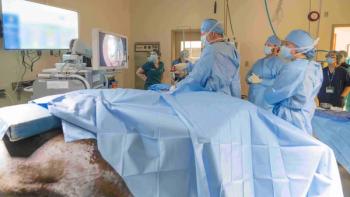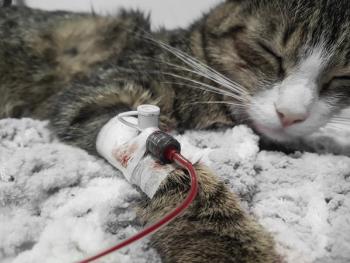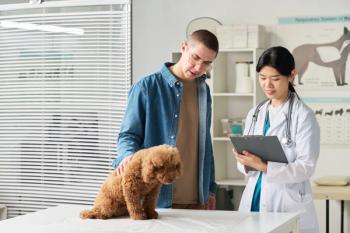
Surgery STAT: Surgical management of esophageal foreign bodies
While esophageal foreign bodies are not as common in our patients as gastrointestinal foreign bodies, they still can and do pose a challenge.
While esophageal foreign bodies are not as common in our patients as gastrointestinal foreign bodies, they still can and do pose a challenge. The most common esophageal foreign bodies encountered are fish hooks, bones and dental chews (Photos 1-3). Referral of these cases to a specialist is always appropriate, as they can be extremely challenging, and the esophagus is an unforgiving organ.
Diagnosis
Dogs and cats with esophageal foreign bodies can present with dysphagia, ptyalism, regurgitation, retching, repeated attempts to swallow, opening and closing of the mouth and obvious signs of discomfort. Additionally, signs of cellulitis, abscessation, respiratory disease or pneumonia may be present if the foreign body is chronic or has perforated the esophagus.
Diagnosis is based on history, clinical signs and cervical and thoracic radiographs. The foreign object may be obvious, or adjacent disease may be noted (from a perforation). Contrast esophagography can better define the lesion or detect perforation. A water-soluble iodinated compound is recommended rather than barium in case a perforation or defect is present.
Treatment options
Treatment depends on the location, chronicity, nature of the foreign body and equipment available. Endoscopy may be used to retrieve a foreign body or push it into the stomach. This method also allows for examination of the esophagus and assessment of its integrity.
Objects often can be retrieved by using a grasper or basket. Another effective method is to pass a balloon catheter into the esophagus beyond the foreign body, inflate the balloon and then pull the object orad by extracting the catheter. Success with these methods depends on appropriate case selection.
Pulling or pushing an esophageal foreign body can result in esophageal perforation and trauma such that the benefits of a minimally invasive technique are outweighed by patient risk. If the foreign body cannot be safely retrieved from the esophagus or moved into the stomach, surgical intervention is recommended.
The esophagus lacks a serosal layer, has a segmental blood supply, is intolerant of longitudinal stretching and is subject to constant motion, all of which must be considered when dealing with these cases. Furthermore, the esophagus is slower to form a fibrin seal, which slows healing when compared with other tissues. The segmental blood supply must be protected during dissection and handling to avoid vascular compromise and tissue necrosis. Only 3 to 5 cm can safely be resected without marked risk of dehiscence (when resection or anastomosis is required).
Postoperative considerations
Postoperative care involves withholding food and water orally for a minimum of 24 hours. The condition of the esophagus and procedure done may dictate a longer period of withholding, in which case placing a gastrotomy or percutaneous endoscopic gastrostomy tube is indicated for nutrition.
Once oral feedings can be started, a gruel or soft food is recommended for the first week. Postoperative antibiotics are indicated if perforation occurred resulting in adjacent contamination of either the cervical tissues or thoracic cavity. Management of a thoracostomy tube will be necessary if a thoracotomy was done or if pyothorax is present.
Analgesic medications are imperative for a good recovery, particularly in cases of a thoracic approach. Gastrointestinal protectants and antacids also are indicated in most cases. Routine postoperative exercise restrictions also are recommended.
Complications that can occur with esophageal procedures include regurgitation, esophagitis, aspiration pneumonia, perforation, fistula formation, stricture formation and leakage or dehiscence of the surgical site resulting in abscess formation or pyothorax. It's important to discuss these complications and the subsequent therapies that may be needed with the owner before endoscopic or surgical intervention.
Dr. Janice Buback is a surgeon at Lakeshore Veterinary Specialists in Port Washington and Racine, Wis. She serves on the ACVS Public Outreach Committee. In addition to her clinic duties, Dr. Buback enjoys providing continuing education to referring veterinarians, staff and the general public. Her husband, three kids, and labrador, Angus, keep her sane—relatively speaking.
Newsletter
From exam room tips to practice management insights, get trusted veterinary news delivered straight to your inbox—subscribe to dvm360.




